Layer Coop Amenities Part I
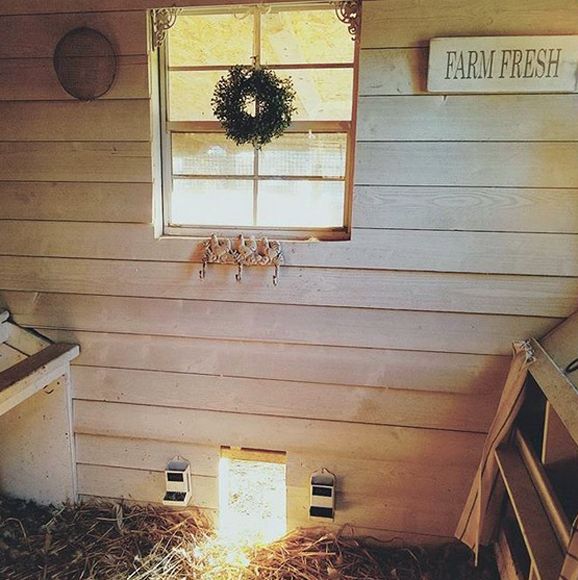
Lisa of Fresh Eggs Daily’s beautiful coop
This is Part I of a 3 part series. This part will talk about basic size, walls, flooring, doors and windows and feed storage.
Part II: https://steemit.com/homesteading/@goldenoakfarm/layer-coop-amenities-part-ii
Part III: https://steemit.com/homesteading/@goldenoakfarm/layer-coop-amenities-part-iii
Planning Your Chicken Coop's Dimensions
The more room you give the birds, the better. The minimums often stated say to provide your chickens with adequate room by allowing 2-3 square feet per chicken, or more for larger birds. Remember more room is better due to Chicken Math*. My experience has shown that 2X or 3X this space should be the guide. Check the table below to calculate the minimum size your chicken coop should be:
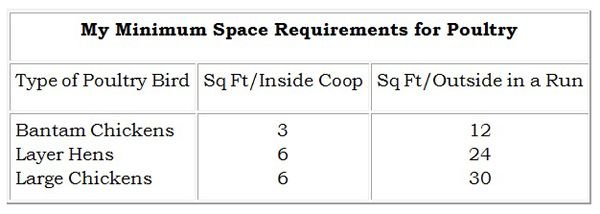
*Chicken Math: 4 chickens = 8 chickens = 20 chickens, as chickens are a gateway animal….
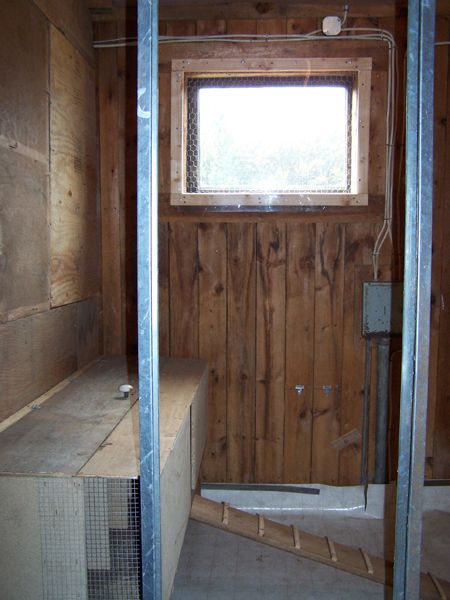
Planning Your Chicken Coop's Ventilation
You MUST make sure your chicken coop is well ventilated! If there isn’t enough ventilation, fumes can build up to a toxic level.
Also if it is not well ventilated, moisture will build up. The combination of cold and moisture can be deadly for birds.
Vents, situated on the south or east side of your chicken coop, can create a proper airflow while also protecting them from drafts. An alternative would be to drill large holes on the north and south sides of the coop where the roof meets the walls.
Good insulation will keep your chickens dry and warm in the winter, and cool in the summer. 2 inches of Styrofoam sheets between the walls (and ceiling) provides great insulation. If you leave foam insulation uncovered they WILL peck at it.
Covering the walls outside with white paint will keep the coop cooler in summer by reflecting heat. Tall plants around its exterior make shade to cool the chicken coop. Don’t let the plants block any ventilation and windows.
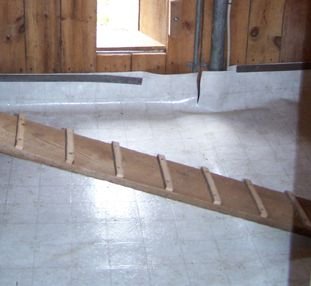
Planning Your Chicken Coop's Flooring
There are many different flooring materials that can be used when building and planning your chicken coop. The cheapest is plain dirt, packed down firmly to create a sturdy foundation. However, such a floor is very vulnerable to rodents. Dirt floors also don't provide the best insulation during the winter, to say nothing of the chore of cleaning a dirt floor.
Concrete, if installed properly, is the most expensive but most sanitary flooring option. A chicken coop with a concrete floor is not only rodent-proof, but also very easy to clean.
Wood flooring is relatively easy to install in your coop. However, it's subject to rotting (especially the wood under the bird waterers) and isn't especially sanitary. It is also not rodent-proof (then again, very few things are!). However, due to its lower cost, wood chicken coop floors are somewhat popular.
To protect wooden floors, solid sheet flooring (linoleum) can be put down. Often remnants can be gotten cheaply from flooring stores. If you are planning to do deep bedding, run the linoleum up the walls at least 18” to protect them from the manure.
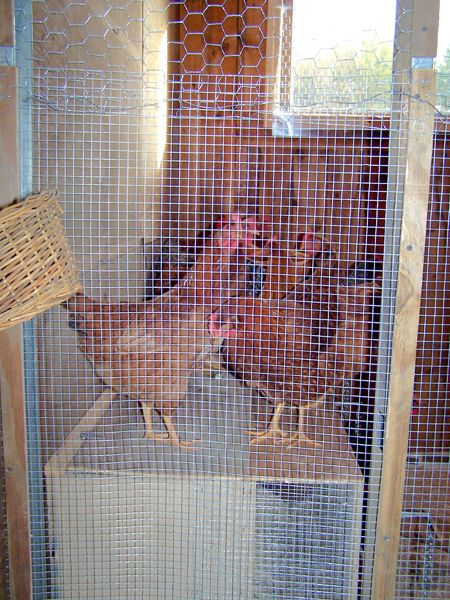
Notice the ½” hardware cloth ends far above the birds, the chicken wire and hardware cloth are screwed into the studs. The gap where the 2 meet has been sealed with a woven wire.
Protecting Your Coop from Vermin
The main complaint of new poultry owners is vermin predation. The housing must keep rodents and other pests out, and should be strong enough to withstand the digging or scraping of a fox or dog. Rats, mice, snakes, and other critters often wreck havoc in a poultry flock. Such problems can easily be prevented with thoughtful, proactive construction.
Open windows and areas should be covered with ½” hardware cloth. Chicken wire, even the smallest size, is easily reached through by raccoons, and slipped through by rodents. Use sheet metal to cover areas being chewed.
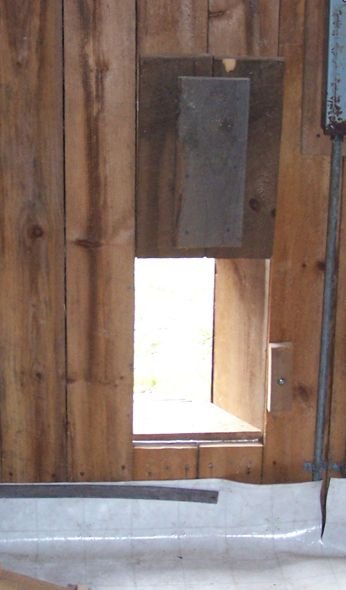
Note that this chicken door has 2 doors. One outside that latches shut with a hook and one inside using a rotating wooden latch. NEVER use the rotating one where a predator can access it.
The Chicken Coop Door
The coop should have a large door that you can enter through AND a small door for the birds. The chicken entrance should measure about 10” wide by 13” high, large enough for 2 birds to go through together. If the door is high off the ground, make a ladder ramp that leads to the ground.
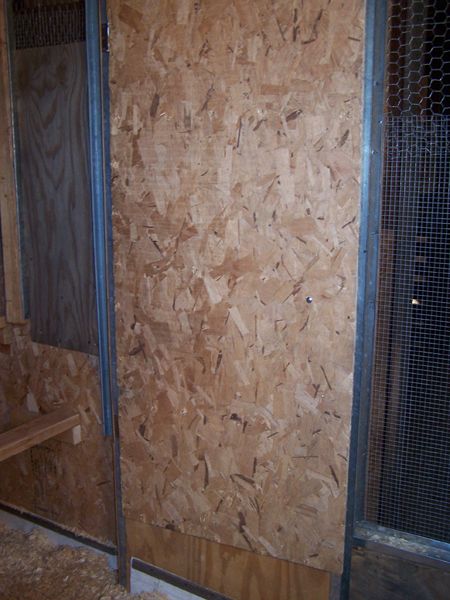
The Human Door
Having a coop that is big enough for a human to work in is important. If it is really hard to catch birds, then they may not be checked as often for mites or injuries.
If it is really hard to clean or repair, then it may not get cleaned as often as needed resulting in bird health problems. Roosts need cleaned off every couple months, nestboxs need emptied and refilled with nesting material, manure needs to be removed or worked as part of a deep bedding system.
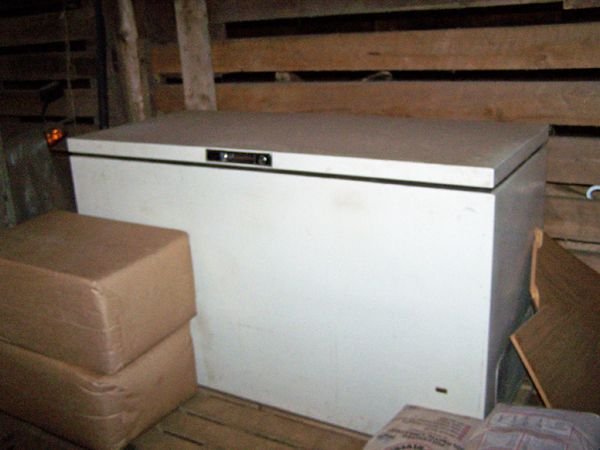
Food Storage
Having a vermin proof, dry, cool place to store your feed will keep it fresh longer. Make sure it can be cleaned out easily. If you use a metal garbage can, the lid will have to be tightly locked on or a raccoon will remove it. They are amazingly strong! We’ve used Civil Defense Water Storage containers. The lid fits securely but some of them are water tight, and that’s not good especially in the humidity of summer.
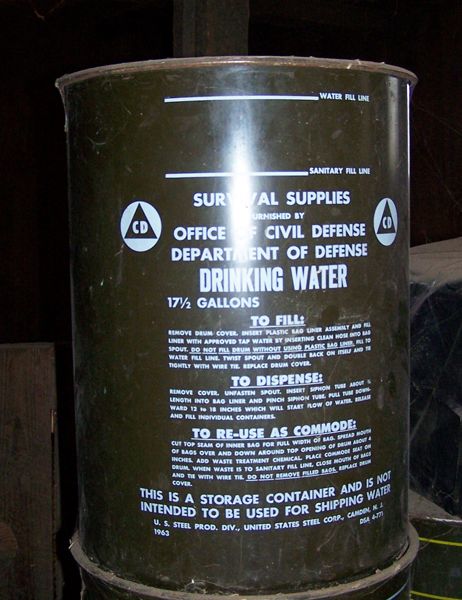
Anything not made of metal can be chewed through by rats. While the lid should close tightly to keep mice out, it should not be air tight as that will cause moisture buildup and mold.
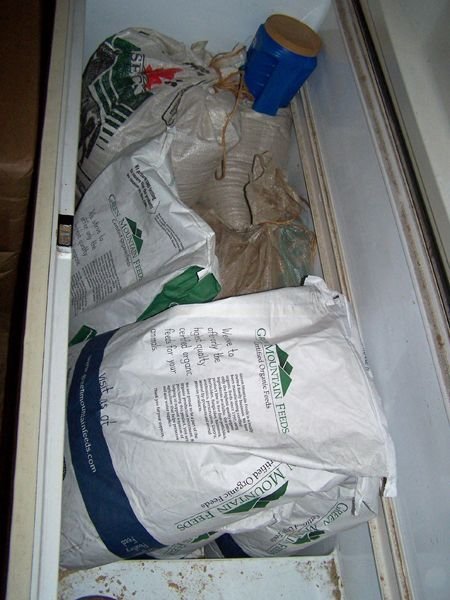
Plan to store several bags of feed. There is chicken math to deal with and you never have too much room for feed storage. This is a 24 cu. ft. freezer.
References:
North & Bell's Commercial Chicken Production Manual
Credits:
Beautiful coop courtesy of Fresh Eggs Daily IG: https://www.instagram.com/p/BaWnGZqFY5c/?taken-by=fresheggsdaily

Community Forums
Congratulations! This post has been added to our growing directory of Steemit "how to" posts for the Homesteading/Survival/Foraging/Prepper communities. If you haven't done so already, you can claim your badge along with the code to add to your posts to let the world know you have chosen to help others Survive, Thrive and be Prepared! Click here to get the code